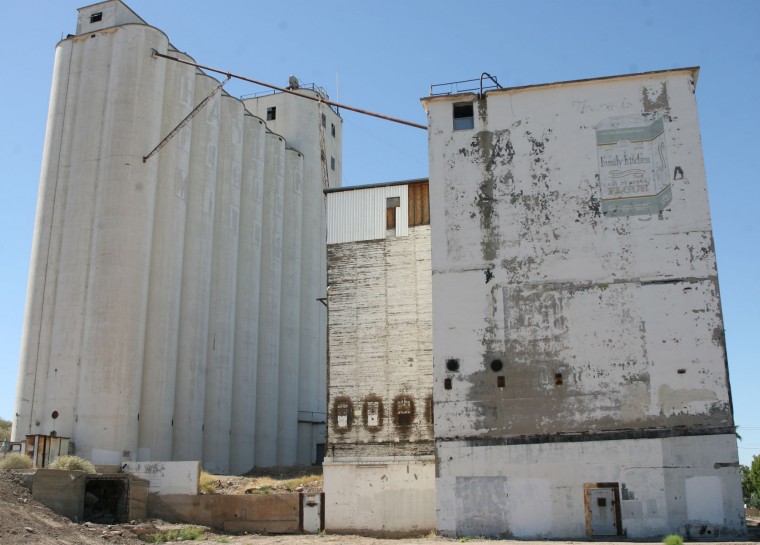

|
Tempe to put some paint on the Hayden Flour Mill, after violating it's own messy yard laws for years!!!!
Tempe moving ahead with modest Hayden Flour Mill restoration Posted: Thursday, May 26, 2011 5:17 pm Tempe moving ahead with modest Hayden Flour Mill restoration By Garin Groff, Tribune East Valley Tribune The Hayden Flour Mill has stood as one of Tempe’s most iconic buildings for more than 90 years, but its reputation in the last decade has been more of a hazardous eyesore. The last decade was also a time of redevelopment proposals that went nowhere, which has triggered the city to revive the historic site on its own. The plans are modest: A coat of paint on the mill. A lawn. Movie screenings in the evening. While the most recent redevelopment plan would involve $500 million, this will come in at about perhaps $350,000. A developer will eventually step forward but the city wasn’t willing to leave the site fenced off indefinitely, said Chris Anaradian, Tempe’s community development director. “One of the lessons we’re learning from the recession is you don’t have to have a big gigantic plan to do a project,” Anaradian said. “It’s OK to do things incrementally.” Even a simple improvement should boost the way the community feels about the place, he said. The fence surrounding it is plastered with images of grand downtown projects that won city approval but evaporated in the recession. Those images ringed many lots in Tempe but now only remain at a few sites where nothing happened, Anaradian said. The improvements should help the sleepy stretch of Mill Avenue come to life and change visitors’ perceptions, said Nancy Hormann, executive director of the Downtown Tempe Community. “I think that they’re going to look at it for what it is instead of considering it an eyesore,” Hormann said. The city is working with the DTC and the Rio Salado Foundation on a project funded largely through donations and $70,000 from Tempe. The city’s involvement comes more than a decade after Tempe began working with developers to restore the mill and surround it with shops, offices, a hotel and restaurants. Tempe approved two projects that never came to fruition, and the city figures it will take several years before the economy will improve enough to entice development. The site is especially costly to develop because of height and square footage restrictions, requirements to restore the mill and silos and a lack of infrastructure. All that adds $8 million to the cost of any development, Mayor Hugh Hallman said. The economy will have to be running at full tilt before a developer will step forward, which Hallman figures will be three or four years. The Rio Salado Foundation aims to raise $250,000 to $350,000 for the site as well as restoring the front of Monti’s La Casa Vieja across the street. Both were developed by Charles Trumbull Hayden and need to be tied together, Hallman said. “Keep in mind this is the historic center of Tempe’s existence,” he said. “The mill is the reason Tempe exists as a city and gave rise to the commercial success that came afterward.” Work is expected to start in early summer. The public won’t have access to the mill or silo, but at least they’ll be able to touch the outside walls when the park opens in the fall. Some additional features could be added depending on fundraising and community response, Anaradian said. But knowing most improvements will be temporary, the city isn’t aiming for luxury. “We were always afraid to put grass in anywhere because then it’s hard to put a building on top of it,” Anardian said. “We don’t want this to be a park forever. But honestly, for the next five years, maybe it needs to be. And that’s OK.”
TIMELINE 1874: Charles Trumbull Hayden opens an adobe flour mill after establishing a canal-building company, general store and ferry across the Salt River. The mill processes grain from across the Arizona territory and establishes Tempe as a center of commerce. |
||